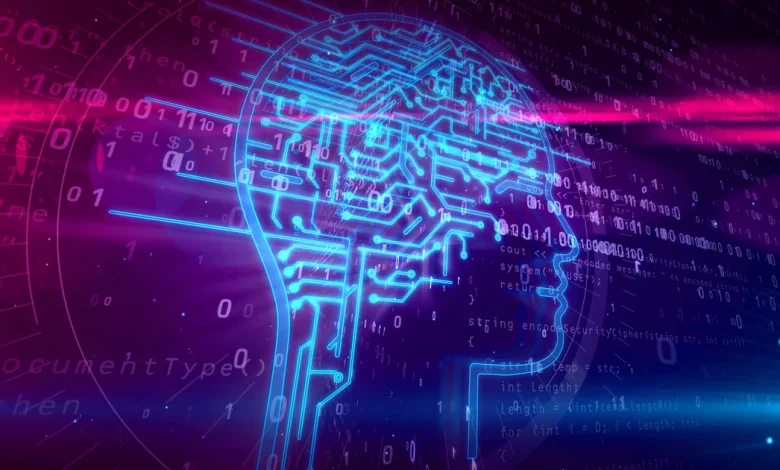Even when automated, CX requires a human touch

As generative AI becomes more firmly entangled with each step in the customer journey, and we get more data on how customers feel about that, a new theme has emerged among vendors and analysts: the importance of empathy as part of the customer experience.
Defining empathy in CX and whether generative AI-fueled agents are capable of delivering, is a hotly debated subject. Jeff Fettes, CEO of agentic AI automation platform Laivly, says that automating customer service without retaining any empathy is a false economy for companies, and there’s a way to blend both AI and human customer agents for the best CX. No Jitter recently asked him how he defines empathy in customer interactions and what role accountability plays in customer experiences.
This conversation has been condensed and edited for clarity.
NO JITTER: What are the biggest frustrations in automated customer service – what really makes people’s blood pressure rise?
Jeff Fettes (Fettes): The biggest frustration in automated customer service today is when solutions simply don’t work or fail to deliver any real value.
There’s been so much hype around AI that many organizations believe that if they just have the right technology and flip the switch, everything will suddenly transform. But what often happens is these organizations invest significant time, money, and effort into launching a solution, only to find it’s a “nothingburger”— it doesn’t drive results, or worse, [the people implementing the technology] never defined what success should look like in the first place.
It’s frustrating (to customer service providers) because it’s not about whether the technology works. AI clearly works. It’s about how you operationalize it to help your CX.
NJ: Can you describe what a workflow would look like if you could use automation to the contact center agent without making things harder on the customer?
Fettes : The ideal workflow adapts to the user, accepts inputs easily, understands intent, and responds in clear, easy-to-digest language.
Too often, systems are built around a fixed process that forces agents or customers into a narrow path, but real conversations don’t work like that. A customer might need to move from A to G, then back to C or B, and the workflow should allow for that, just like a skilled human agent would. When designing automation to support contact center agents, the key is adoption. That means creating workflows that are flexible, not rigid.
Modern AI makes this kind of flexibility possible. There’s no reason to rely on rigid, rule-based scripts anymore. Automation should allow customers to communicate naturally, without having to fit into a specific format or sequence.
NJ: We’ve often heard that “empathy” is a feature that good AI agents can have. Is there a standard industry definition for empathy in AI agents? What are we talking about when we talk about empathy?
Fettes : Empathy in AI is about context. It’s easy for a system to fake empathy by detecting sentiment and replying with canned sympathy. Real empathy requires comprehension: knowing why someone is frustrated, what outcome they need, and how to get them there quickly.
For humans in the call center, empathy is active listening. In AI terms, it’s contextual intelligence — interpreting emotion, history, and intent to recommend the most constructive next step. That’s why it’s important to train AI to demonstrate empathy through actionable help, not emotional imitation.
In other words, empathy is less about saying “I’m sorry” and more about showing that you’re listening through speed, accuracy, and respect for the customer’s time.
NJ: Okay, we know empathy is something that’s brought up a lot – what about accountability? How do AI automation and agents influence whether customers believe the business is accountable for the customer experience?
Fettes : Think of it this way: empathy builds trust, accountability sustains it. The key is finding the right balance between attended and unattended experiences, then knowing when automation can handle a task efficiently and when a human touch is needed to provide reassurance.
Empathy is ultimately a human characteristic. In many situations, it’s enough for automation to resolve an issue quickly and clearly — for example, telling you your lost bag will arrive within 24 hours. But when the situation carries emotional weight — say, that bag holds the tuxedo you need for your wedding—people want to hear a human voice that acknowledges their concern and takes ownership of the outcome.
That’s where accountability really comes through. AI should be designed to make accountability visible. Automation collects the right data, tracks commitments, and ensures follow-through, but the agent remains the face of resolution. The customer still needs to hear a name and have that name attached to a promise or resolution. That pairing — human ownership backed by machine precision — is how accountability scales without becoming impersonal.
NJ: To further expand on accountability between the business and the customer, can we explore what elements of the relationship are that lead customers to trust a brand?
Fettes: Consistency, transparency, and follow-through. Trust doesn’t come from one great interaction; it comes from hundreds of small or predictable ones. Did the company understand my problem? Did they solve my issue the first time? Did they follow up when they said they would? Automation can deliver trust in these moments, if it’s used responsibly, by surfacing context, reducing errors, and ensuring promises are kept.
Trust also grows when brands take responsibility for their commitments. It’s not just about acknowledging when something goes wrong; it’s about owning the outcome. If a company promises a delivery date and then realizes a delay will cause a customer to miss something meaningful, like a birthday gift arriving late, the business that says “We’ll make it right” earns lasting trust.
When customers know what to expect, trust can be built over time. Automation can reinforce that reliability. Using AI to keep records consistent across systems, prevent duplicate work, and ensure next-day follow-ups actually happen, that’s what tells the customer “We’ve got you.”
NJ: How could AI agents influence those elements?
Fettes: AI offers the ability to personalize CX in ways we couldn’t have in the past. Traditionally, touchpoints like follow-through and accountability were handled at scale through standardized systems, which limited personalization. With AI agents, companies can now deliver individualized care for every customer, whether that’s sending a confirmation, tracking a refund, or escalating an issue before the customer has to.
The paradox is that the most effective automation makes the experience more human. AI handles the noise so agents can focus on the connection. Automation doesn’t replace empathy or trust; it enables it.




